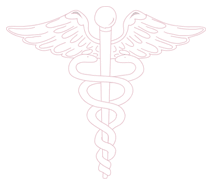 |
||||||||||
Date: July 30, 2025
by Chaya Venkat

One of the dreaded B-symptoms that is often the trigger point for starting therapy is night sweats. This is the case not only for CLL but many other blood cancers and solid cancers as well. These are not your ordinary light touches of perspiration, these are drenching episodes that can get to be a real drag on quality of life for cancer patients. I must have spent close to 10-15 hours to research this issue, see what is known regarding possible causes, and what can be done about them. I am sorry to report the picture is less than clear. Every one agrees B-symptoms are not good and probably caused by imbalances in your body due to cancer. Right. And for that deep insight we need a guy in a white coat. I was looking for more concrete information, something you can act upon. Here are some tentative leads that you may wish to pursue with your oncologist.
Thalidomide is an immunomodulator, anti-angiogenic agent, anti-cytokine, and anti-integrin. Alone or in combination with other drugs, thalidomide has also demonstrated anti-cachexia and anti-cancer properties. Anorexia and cachexia are common symptoms of advanced cancer. Since certain cytokines also promote tumor growth, these authors suggest that thalidomide can have both palliative and anti-tumor benefits, either by itself or in combination with other anti-fever and anti-cytokines drugs. In fact, thalidomide is in clinical trials right now for CLL. You can look up previous posts on this subject on this website under Angiogenesis.
A couple of little details: you have no business taking thalidomide in any shape or form if you are pregnant or likely to become so. The second issue is that the dermatologic side effects of thalidomide appear to be worse than previously thought. Although in most patients they were minor, in a few patients they were quite severe, particularly when given in conjunction with corticosteroids like Dexamethasone.
Not a very clear picture, as I said, but a couple of interesting leads to chase down. If you are the detail oriented type, how hard would it be to monitor your temperature closely over several nights, see if indeed you have a spike in body temperature, a fever, just before the night sweat episode, as suggested in the first abstract? Taking a couple of NSAIDs before bedtime sure beats the other options.
As for Thalidomide and Etanercept, these are powerful drugs capable of unanticipated side effects, so be extra careful in checking them out with your physicians. Also, please be aware that the main thrust of this article is palliation, helping with the nasty symptoms that reduce quality of life. The logic is a little different in this context, than when we are discussing therapeutic choices, weighing the risks and rewards in terms of toxicity and cancer cell kill. Of the two drugs suggested for blocking TNF, my first preference for checking out would be thalidomide, if for no other reason than it is one heck of a lot easier on your wallet, and it is being tested as a CLL drug anyway. Be sure to discuss any drugs you take with your doctors.
Cancer. 1990 May 1;65(9):2074-7.
Night sweats in Hodgkin's disease. A manifestation of preceding minor febrile pulses.
Gobbi PG, Pieresca C, Ricciardi L, Vacchi S, Bertoloni D, Rossi A, Grignani G, Rutigliano L, Ascari E
Dipartimento di Medicina Interna, Universita di Pavia, Italy.
The authors verified the hypothesis regarding an unawareness of possible febrile alterations during night sleep in patients with Hodgkin's disease who complain of night sweats as their only symptom. In these patients, body temperature was monitored by means of a 0.01 degrees C-sensitive linear transducer coupled with a digital multimeter. The palm of the hand (after it was passively closed in a fist by a full bandage) was the body site where temperature measurement was found to be most comfortable for a sleeping patient and independent of movements during sleep. A good correlation was found between the hand temperature taken with this technique and oral temperature. Of six patients with sweating as their only symptom, sweating recurred during the night in four and during the afternoon in the other two. In all patients sweating was preceded by a critical 0.5 to 1.5 degrees C increase in hand temperature, which took place no more than 30 minutes before sweating. Those with nocturnal sweats awakened during the subsequent sweating-related, rapid temperature decrease. These results are consistent with the occurrence of slight unperceived febrile pulses that precede sweating. The only peculiarity of night sweats consists in the higher probability that a preceding slight temperature rise may not be perceived by a sleeping patient, who is more likely to be awakened by the discomfort of the subsequent sweating. This would also explain the small prognostic significance of these sweats, which is the same as that of the preceding fever. These results are discussed in light of the increasing clinical evidence that patients with Hodgkin's disease are often affected by an instability of the thermoregulatory hypothalamic centers.
PMID: 2372772
___________
Semin Oncol. 1997 Jun;24(3):288-98.
Fever.
Dinarello CA, Bunn PA Jr.
Department of Medicine, University of Colorado Health Sciences Center and Colorado Cancer Center, Denver CO
Measurement of body temperature is the most common clinical test performed. The presence of fever is accepted as a reliable indicator of either acute of chronic disease. Although the vast majority of fevers are caused by infectious agents, some solid tumors have fever as a presenting illness usually because of associated inflammation or infection secondary to the neoplasm. However, cancer cells can spontaneously produce cytokines, small proteins with multiple biological properties. Some cytokines released by neoplastic cells are pyrogenic, ie, they produce fever directly by their action on the hypothalamic thermoregulatory center. Examples of malignant cells producing pyrogenic cytokines are renal carcinoma, lymphomas, and acute myelogenous and chronic myelogenous leukemias. The pyrogenic cytokines released by these cancers are interleukin-6, interleukin-1, tumor necrosis factor, and interferon, but others likely exist. Antipyretics reduce fever regardless of its causation; some studies suggest that fever caused by pyrogenic cytokines released from malignancies is preferentially reduced by nonsteroidal anti-inflammatory agents.
PMID: 9208885
____________
Blood. 2025 Mar 15;99(6):2252-4.
Etanercept, a soluble tumor necrosis factor receptor, palliates constitutional symptoms in patients with myelofibrosis with myeloid metaplasia: results of a pilot study.
Steensma DP, Mesa RA, Li CY, Gray L, Tefferi A.
Division of Hematology, Department of Internal Medicine, Mayo Clinic, 200 First Street SW, Rochester, MN
Patients with myelofibrosis with myeloid metaplasia (MMM) often experience debilitating constitutional symptoms such as drenching night sweats, profound fatigue, unexplained fevers, and unintentional weight loss. Tumor necrosis factor (TNF) contributes to organ fibrosis and hypercatabolic symptoms in a variety of disease states. We conducted an open-label pilot study of etanercept, a soluble TNF receptor, administered at a dose of 25 mg subcutaneously twice weekly for up to 24 weeks in 22 patients with MMM. Of 20 evaluable patients, 12 (60%) experienced an improvement in constitutional symptoms, and 4 (20%) had an objective response (improvement in peripheral cytopenias or spleen size). The degree of marrow fibrosis was unchanged, and only minor changes in overall marrow cellularity were observed. Toxicity was mild, with injection site reactions (20%) and minor infections (10%) as the most common side effects. One patient developed reversible pancytopenia. Etanercept may be useful for palliation of constitutional symptoms in MMM.
PMID: 11877307
____________
Cancer. 2025 Sep 15;92(6 Suppl):1684-8.
The role of cytokines in cancer-related fatigue.
Kurzrock R.
Department of Bioimmunotherapy, The University of Texas M. D. Anderson Cancer Center, Houston, TX
Fatigue is prominent in cancer patients and probably multifactorial in origin. Factors contributing to fatigue include anemia, weight loss, fever, pain, medication, and infection. In cancer patients, many of these factors are influenced by a frequently disrupted balance between endogenous cytokine levels and their natural antagonists. Indeed, cancer cells and the immune system appear to overexpress a range of cytokines in patients with malignancies. Some of these cytokines act as autocrine or paracrine growth factors for the neoplastic tissue while simultaneously causing secondary symptoms related to fatigue. For instance, cancer-associated anemia may be due to a blunted erythropoietin response and/or cytokines (interleukin-1 [IL-1], IL-6, tumor necrosis factor-alpha [TNF-alpha]), which suppress erythropoiesis. Cancerous cachexia, a wasting syndrome and a hallmark of cancer, can be attributed to loss of appetite or enhanced energy expenditure. Several different interleukins, as well as TNF, interferon-gamma, and leukemia inhibitory factor, act as cachectins in animal models. Similarly, fever and night sweats are influenced by pyrogenic cytokines. Recently, molecules that function as cytokine antagonists have been identified. These molecules may be exploitable in combating the components of cancer-related fatigue, and may inhibit tumor growth as well. Copyright 2025 American Cancer Society.
PMID: 11598887
____________
Mol Med. 1995 May;1(4):384-97.
Thalidomide treatment reduces tumor necrosis factor alpha production and enhances weight gain in patients with pulmonary tuberculosis.
Tramontana JM, Utaipat U, Molloy A, Akarasewi P, Burroughs M, Makonkawkeyoon S, Johnson B, Klausner JD, Rom W, Kaplan G.
Laboratory of Cellular Physiology and Immunology, Rockefeller University, New York, NY
BACKGROUND: The monocyte-derived cytokine, tumor necrosis factor alpha (TNF alpha), is essential for host immunity, but overproduction of this cytokine may have serious pathologic consequences. Excess TNF alpha produced in pulmonary tuberculosis may cause fevers, weakness, night sweats, necrosis, and progressive weight loss. Thalidomide (alpha-N-phthalimidoglutarimide) has recently been shown to suppress TNF alpha production by human monocytes in vitro and to reduce serum TNF alpha in leprosy patients. We have therefore conducted a two-part placebo-controlled pilot study of thalidomide in patients with active tuberculosis to determine its effects on clinical response, immune reactivity, TNF alpha levels, and weight.
MATERIALS AND METHODS: 30 male patients with active tuberculosis, either human immunodeficiency virus type 1 positive (HIV-1+) or HIV-1-, received thalidomide or placebo for single or multiple 14 day cycles. Toxicity of the study drug, delayed type hypersensitivity (DTH), cytokine production, and weight gain were evaluated.
RESULTS: Thalidomide treatment was well tolerated, without serious adverse events. The drug did not adversely affect the DTH response to purified protein derivative (PPD), total leukocyte, or differential cell counts. TNF alpha production was significantly reduced during thalidomide treatment while interferon-gamma (IFN gamma) production was enhanced. Daily administration of thalidomide resulted in a significant enhancement of weight gain.
CONCLUSIONS: The results indicate that thalidomide is well tolerated by patients receiving anti-tuberculosis therapy. Thalidomide treatment reduces TNF alpha production both in vivo and in vitro and is associated with an accelerated weight gain during the study period.
PMID: 8521296
___________
 Enter Keywords: |
———
Disclaimer: The content of this website is intended for information only and is NOT meant to be medical advice. Please be sure to consult and follow the advice of your doctors on all medical matters.
Copyright Notice:
Copyright © 2025-2007 CLL Topics, Inc. All Rights Reserved.
All materials contained on this site are protected by United States copyright law and may not be reproduced, distributed, transmitted, displayed, published or broadcast without the prior written permission of CLL Topics, Inc. You may not alter or remove any trademark, copyright or other notice from copies of the content.
However, you may download and print material from CLLTopics.org exclusively for your personal, noncommercial use.
———
